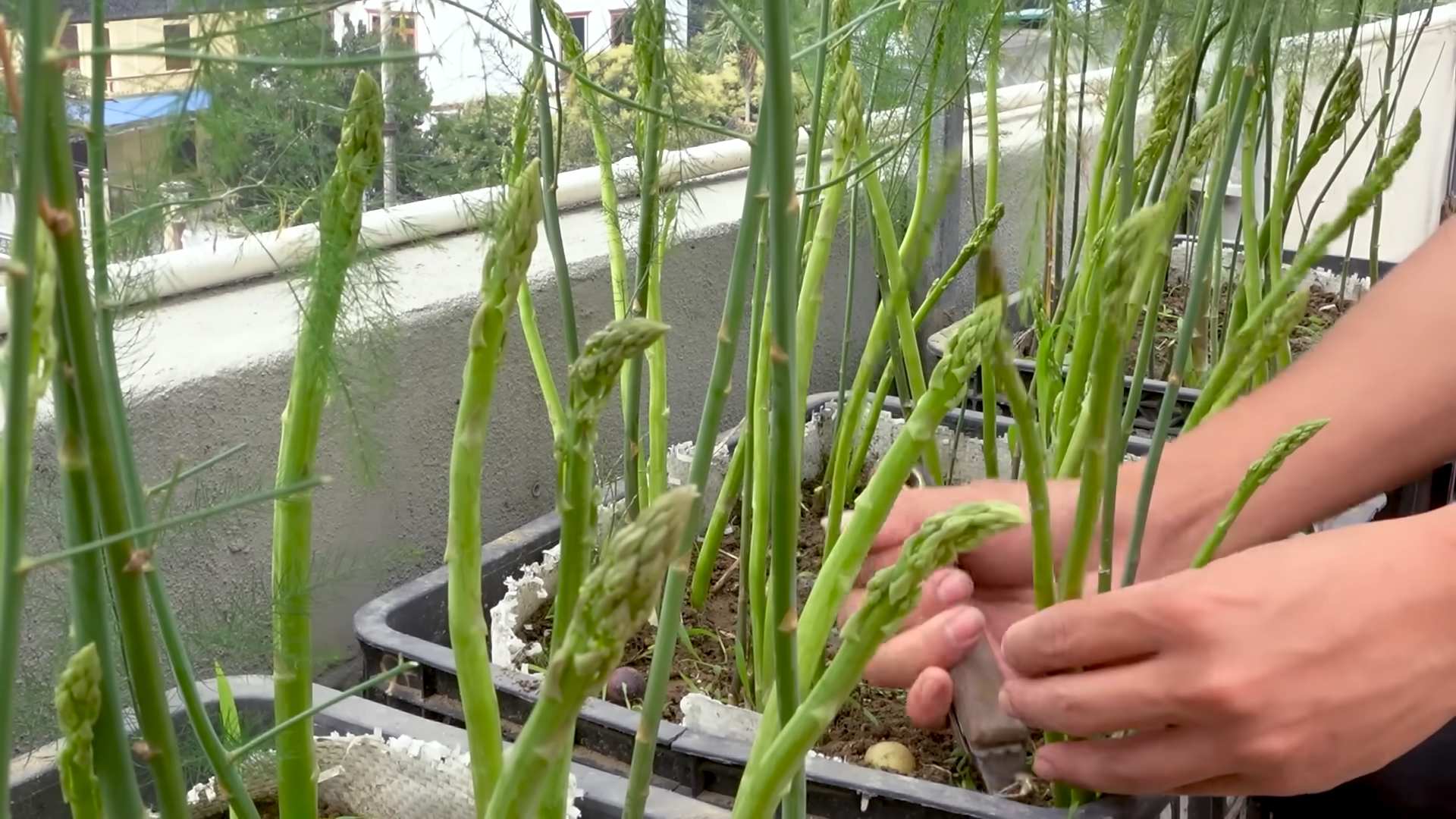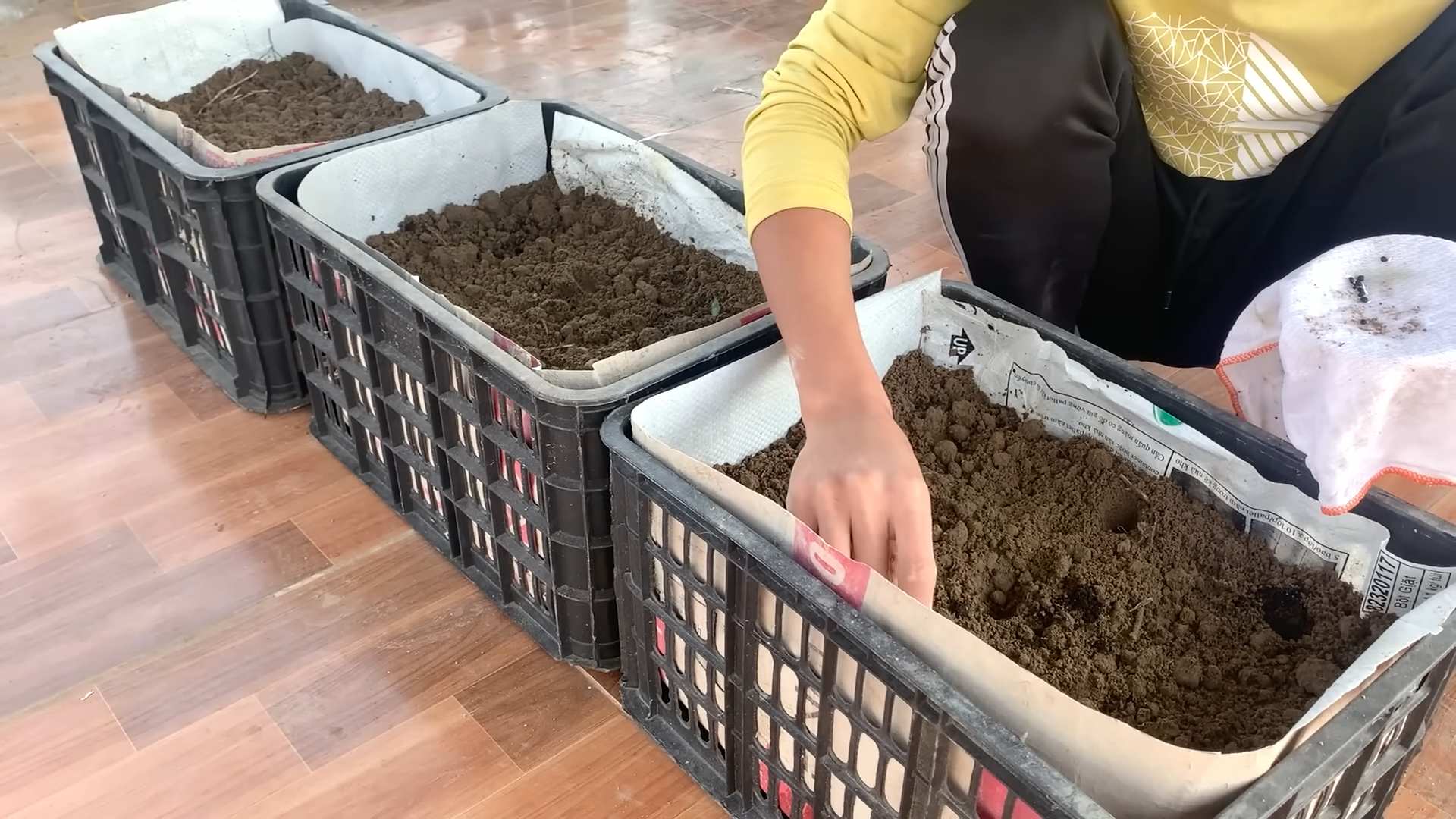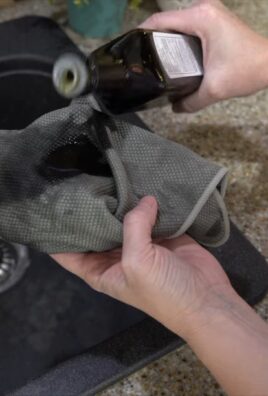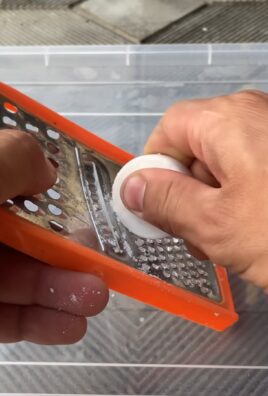Terrace garden asparagus: Dreaming of fresh, homegrown asparagus spears gracing your dinner plate, even if you only have a terrace? You’re not alone! For centuries, asparagus has been prized for its delicate flavor and nutritional benefits, enjoyed by everyone from Roman emperors to modern-day foodies. But the thought of cultivating this perennial vegetable often conjures images of sprawling country gardens, leaving urban dwellers feeling left out.
But what if I told you that delicious, homegrown asparagus is entirely achievable, even on a limited terrace space? This DIY guide is your key to unlocking the secrets of successful terrace garden asparagus cultivation. We’ll break down the process into easy-to-follow steps, from selecting the right varieties to creating the perfect growing environment.
In today’s world, where access to fresh, healthy produce can be a challenge, growing your own food is more important than ever. Imagine the satisfaction of harvesting your own asparagus, knowing exactly where it came from and how it was grown. Plus, it’s a fantastic way to connect with nature, reduce your carbon footprint, and add a touch of green to your urban oasis. Let’s get started and transform your terrace into an asparagus haven!

Growing Asparagus in Containers: A Terrace Garden Delight
Asparagus, that delectable spring vegetable, might seem like something only large farms can produce. But guess what? You can absolutely grow asparagus in containers on your terrace! It takes a little patience, as asparagus needs a few years to mature, but the fresh, homegrown spears are well worth the wait. I’m going to walk you through everything you need to know to cultivate your own asparagus patch in pots.
Choosing the Right Container and Asparagus Variety
First things first, let’s talk about the essentials: the container and the asparagus variety.
* Container Size: Asparagus roots are deep, so you’ll need a large container. I recommend a pot that’s at least 24 inches in diameter and 24 inches deep. The bigger, the better, really! This gives the roots plenty of room to spread out and establish themselves. You can use plastic, terracotta, or even a repurposed container like a large barrel. Just make sure it has good drainage holes.
* Drainage: This is crucial! Asparagus hates sitting in soggy soil. Ensure your container has ample drainage holes to prevent root rot. You can add a layer of gravel or broken pottery at the bottom of the pot to further improve drainage.
* Asparagus Variety: Opt for varieties that are known to perform well in containers. ‘Jersey Knight,’ ‘Jersey Giant,’ and ‘Purple Passion’ are all excellent choices. ‘Jersey Knight’ is a particularly good option as it’s an all-male variety, meaning it won’t produce seeds, allowing the plant to focus its energy on spear production. ‘Purple Passion’ is not only delicious but also adds a beautiful splash of color to your terrace garden.
Preparing the Soil and Planting Your Asparagus Crowns
Now that you’ve got your container and asparagus variety sorted, let’s get our hands dirty!
* Soil Mix: Asparagus thrives in well-draining, fertile soil. I like to use a mix of equal parts potting soil, compost, and perlite or vermiculite. The potting soil provides a good base, the compost adds nutrients and improves drainage, and the perlite or vermiculite helps with aeration.
* Planting Crowns: You’ll be planting asparagus crowns, which are essentially the root systems of young asparagus plants. You can purchase these from a reputable nursery or online supplier. Look for crowns that are plump and healthy-looking.
* Timing: The best time to plant asparagus crowns is in early spring, as soon as the soil is workable.
* Planting Depth: This is important! Dig a trench in the center of your container that’s about 6-8 inches deep. Create a small mound of soil in the bottom of the trench. Place the asparagus crown on top of the mound, spreading the roots out around it like a spider.
* Spacing: If you’re planting multiple crowns in the same container (which is fine if you have a large enough pot), space them about 12 inches apart.
* Covering the Crowns: Gently cover the crowns with about 2 inches of soil. As the asparagus shoots emerge, gradually add more soil until the trench is filled. This encourages the development of a strong root system.
* Watering: Water the newly planted crowns thoroughly.
Caring for Your Asparagus Plants
Asparagus needs consistent care to thrive. Here’s what you need to do:
* Watering: Keep the soil consistently moist, but not waterlogged. Water deeply whenever the top inch of soil feels dry. During hot, dry weather, you may need to water more frequently.
* Fertilizing: Asparagus is a heavy feeder, so regular fertilization is essential. In the first year, fertilize every few weeks with a balanced liquid fertilizer. In subsequent years, fertilize in early spring and again after the harvest season. You can also amend the soil with compost or well-rotted manure.
* Sunlight: Asparagus needs at least 6-8 hours of sunlight per day. Choose a sunny spot on your terrace for your container.
* Weeding: Keep the container free of weeds, as they can compete with the asparagus for nutrients and water. Hand-pull any weeds that appear.
* Mulching: Apply a layer of mulch around the asparagus plants to help retain moisture, suppress weeds, and regulate soil temperature. Straw, wood chips, or shredded leaves are all good options.
* Fern Care: As the asparagus grows, it will produce tall, feathery ferns. These ferns are essential for photosynthesis and storing energy for the following year’s spear production. Allow the ferns to grow and mature throughout the summer and fall.
* Winter Dormancy: In late fall or early winter, the ferns will turn yellow and brown. This is a sign that the plant is entering dormancy. Cut the ferns back to the ground after they have completely dried out. This helps to prevent disease and pests from overwintering in the ferns.
Harvesting Your Asparagus Spears
Patience is key when it comes to harvesting asparagus.
* First Year: Do not harvest any spears in the first year. This allows the plants to establish a strong root system.
* Second Year: You can harvest a few spears in the second year, but only for a short period (about 2 weeks).
* Third Year and Beyond: In the third year and beyond, you can harvest spears for a longer period (6-8 weeks).
* Harvesting Technique: Harvest spears when they are about 6-8 inches tall and about as thick as your finger. Use a sharp knife to cut the spears at ground level.
* Harvesting Frequency: Harvest spears every day or two during the peak of the season.
* Stopping Harvesting: Stop harvesting when the spears become thin and spindly. This indicates that the plant is starting to deplete its energy reserves.
Dealing with Pests and Diseases
Asparagus is generally a hardy plant, but it can be susceptible to certain pests and diseases.
* Asparagus Beetles: These beetles can damage the spears and ferns. Hand-pick them off the plants or use an insecticidal soap.
* Asparagus Rust: This fungal disease can cause orange or brown spots on the ferns. Ensure good air circulation around the plants and avoid overhead watering. You can also use a fungicide if necessary.
* Fusarium Crown and Root Rot: This fungal disease can cause the plants to wilt and die. Prevent this disease by planting asparagus in well-draining soil and avoiding overwatering.
Troubleshooting Common Problems
Even with the best care, you might encounter some problems along the way. Here are a few common issues and how to address them:
* Yellowing Ferns: Yellowing ferns can be caused by a variety of factors, including nutrient deficiencies, overwatering, underwatering, or pests and diseases. Check the soil moisture, fertilize the plants, and inspect them for pests and diseases.
* Thin Spears: Thin spears can be a sign that the plants are not getting enough nutrients or water. Fertilize the plants and ensure they are getting adequate water. It could also mean you’re harvesting for too long.
* No Spears: If your asparagus plants are not producing any spears, it could be because they are too young, not getting enough sunlight, or not getting enough nutrients. Be patient, ensure they are getting at least 6-8 hours of sunlight per day, and fertilize them regularly.
Extending the Harvest
Want to enjoy fresh asparagus for even longer? Here are a few tips:
* Succession Planting: Plant different varieties of asparagus that mature at different times.
* Cold Frames: Use cold frames to protect the plants from frost and extend the growing season.
* Forcing Asparagus: You can force asparagus to produce spears earlier in the season by bringing the container indoors and providing warmth and light.
Enjoying Your Homegrown Asparagus
Finally, the best part: enjoying the fruits (or rather, vegetables) of your labor! Freshly harvested asparagus is incredibly delicious. You can steam it, grill it, roast it, or add it to salads, soups, and omelets. The possibilities are endless!
Growing asparagus in containers on your terrace is a rewarding experience. It takes a little time and effort, but the taste of homegrown asparagus is simply unbeatable. So, grab a container, some asparagus crowns, and get ready to enjoy a delicious harvest! I hope this guide has been helpful, and happy gardening!

Conclusion
So, there you have it! Cultivating your own asparagus in a terrace garden is not just a gardening project; it’s an investment in fresh, flavorful meals and a connection to the natural world. This DIY approach to growing asparagus, while requiring patience, offers rewards that far outweigh the initial effort. Imagine stepping onto your terrace, snipping off a few spears of vibrant green asparagus, and incorporating them into your dinner – a taste of homegrown goodness that store-bought varieties simply can’t match.
Why is this DIY trick a must-try? Because it empowers you to control the quality of your food, reduces your reliance on grocery stores, and provides a sustainable source of delicious vegetables. Asparagus, often expensive and sometimes lacking in freshness when purchased, becomes readily available and bursting with flavor when grown in your own terrace garden. Plus, the process itself is incredibly rewarding, offering a sense of accomplishment as you nurture your plants from tiny crowns to productive, yielding specimens.
But the benefits don’t stop there. Growing your own asparagus allows you to experiment with different varieties. While ‘Jersey Knight’ is a popular and reliable choice, consider exploring other options like ‘Purple Passion’ for its unique color and sweeter flavor, or ‘Mary Washington’ for its classic taste and disease resistance. You can also tailor your growing conditions to suit your specific climate and terrace environment, ensuring optimal growth and yield.
Furthermore, consider companion planting to enhance your asparagus patch. Herbs like basil, parsley, and rosemary can deter pests and attract beneficial insects, while tomatoes and marigolds can help protect against asparagus beetles. These symbiotic relationships not only improve the health of your asparagus plants but also create a vibrant and diverse ecosystem on your terrace.
Don’t be intimidated by the perceived difficulty of growing asparagus. With proper planning, preparation, and a little patience, you can successfully cultivate this delectable vegetable in your own terrace garden. Remember to choose a sunny location, prepare well-draining soil, and provide adequate support for the ferns as they grow. Regular watering and fertilization will also contribute to healthy and productive plants.
We encourage you to embrace this DIY trick and embark on your own asparagus-growing adventure. The satisfaction of harvesting your own fresh asparagus is truly unparalleled. And remember, gardening is a journey, not a destination. There will be challenges along the way, but the rewards are well worth the effort.
So, grab your gardening gloves, prepare your soil, and get ready to experience the joy of growing your own terrace garden asparagus. We’re confident that you’ll be delighted with the results.
Finally, we want to hear about your experiences! Share your tips, tricks, and triumphs in the comments below. Let’s build a community of terrace garden asparagus enthusiasts and learn from each other. Happy gardening!
Frequently Asked Questions (FAQ)
1. How long does it take to harvest asparagus after planting?
Patience is key when growing asparagus! It typically takes 2-3 years after planting asparagus crowns before you can begin harvesting. This allows the plants to establish a strong root system and build up their energy reserves. Harvesting too early can weaken the plants and reduce their long-term productivity. In the first year, focus on letting the ferns grow tall and strong. In the second year, you might harvest a few spears, but only for a short period (1-2 weeks). By the third year, you can usually enjoy a full harvest season, which typically lasts 6-8 weeks in the spring. Remember, the wait is worth it for the delicious, homegrown asparagus you’ll enjoy for years to come.
2. What is the best soil for growing asparagus in a terrace garden?
Asparagus thrives in well-draining soil that is rich in organic matter. The ideal soil pH is between 6.5 and 7.5. Before planting, amend your soil with compost, aged manure, or other organic materials to improve its fertility and drainage. If your soil is heavy clay, consider adding sand or perlite to improve drainage. Raised beds or containers are excellent options for terrace gardens, as they provide better drainage and allow you to control the soil composition. A good soil mix for asparagus in containers would be a combination of potting mix, compost, and perlite or vermiculite.
3. How much sunlight does asparagus need?
Asparagus requires at least 6-8 hours of direct sunlight per day to thrive. Choose a sunny location on your terrace for your asparagus patch. If your terrace is partially shaded, try to position your asparagus plants where they will receive the most sunlight possible. Insufficient sunlight can result in weak, spindly growth and reduced yields.
4. How often should I water asparagus?
Asparagus needs consistent moisture, especially during the growing season. Water deeply whenever the top inch of soil feels dry to the touch. Avoid overwatering, as this can lead to root rot. During dry spells, you may need to water more frequently. Mulching around your asparagus plants can help retain moisture and suppress weeds.
5. What are common pests and diseases that affect asparagus?
Asparagus beetles are a common pest that can damage asparagus spears and ferns. Handpicking the beetles or using insecticidal soap can help control infestations. Asparagus rust is a fungal disease that can cause orange pustules on the ferns. Good air circulation and proper watering practices can help prevent rust. If rust does occur, you can treat it with a fungicide. Other potential pests and diseases include crown rot, fusarium wilt, and aphids. Regularly inspect your plants for signs of problems and take action promptly to prevent them from spreading.
6. How do I harvest asparagus?
Harvest asparagus spears when they are about 6-8 inches tall and have tightly closed tips. Use a sharp knife or asparagus knife to cut the spears at or slightly below the soil surface. Avoid damaging the crown when harvesting. Harvest spears every day or two during the peak of the season. As the harvest season progresses, the spears will become thinner and less tender. At this point, stop harvesting and allow the ferns to grow tall and replenish the plant’s energy reserves.
7. Can I grow asparagus in containers?
Yes, asparagus can be successfully grown in containers, making it ideal for terrace gardens. Choose a large container that is at least 12 inches deep and wide to accommodate the asparagus roots. Use a well-draining potting mix and provide adequate sunlight and water. Container-grown asparagus may require more frequent fertilization than asparagus grown in the ground.
8. How do I fertilize asparagus?
Asparagus benefits from regular fertilization. In the spring, after the harvest season, fertilize with a balanced fertilizer (e.g., 10-10-10) or a fertilizer specifically formulated for vegetables. You can also side-dress with compost or aged manure. Avoid over-fertilizing, as this can damage the plants.
9. What do I do with the asparagus ferns in the fall?
In the fall, after the ferns have turned yellow or brown, cut them back to the ground. This will help prevent diseases and pests from overwintering in the ferns. You can also apply a layer of mulch around the asparagus plants to protect them from the cold.
10. How long will my asparagus plants last?
With proper care, asparagus plants can live for 15-20 years or even longer. This makes them a worthwhile investment for your terrace garden. By following these tips and providing your asparagus plants with the right conditions, you can enjoy a bountiful harvest of fresh, delicious asparagus for many years to come.





Leave a Comment